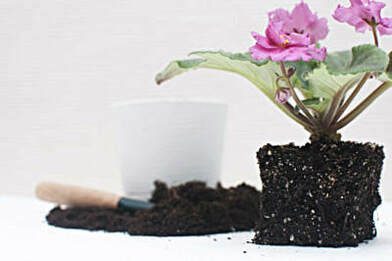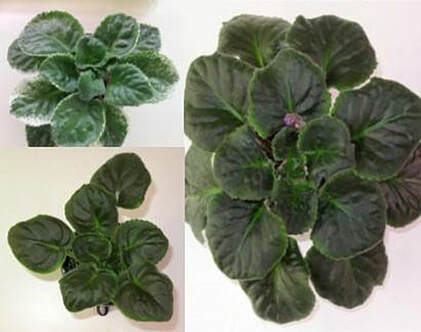
TIGHT CENTRES – Ruth Coulson (Ruth is with the Australian African Violet Association and lives on the Central North Coast of NSW) (Originally published on the African Violets Down Under Facebook page.(www.facebook.com/groups/241227626277942/?fref=nf) ?Over this very hot summer many of us are finding that our African violets are growing very “tight” in the centre. That is to say, the leaves are bunching up and not able to extend in the flat pattern we usually like to see. This should not be confused with the effects of a mite infestation, which we dealt with some months ago. With mites, the inner leaves become smaller, extra hairy and may become yellowish or greyish. What I am looking at here is the situation where leaves get a crumpled appearance. The centre of the plant just “isn’t right”, even though it has no disease or infestation. What cause can there be aside from mites? One thing to think about is light. If the plant is receiving too much more light than it needs it will tend to grow congested and a little bit upwards rather than flat. Violets rarely burn from too much light if under artificial lights but may show this growth trait, or bleaching instead. If you can eliminate that possibility, then the other two things to be thought about are heat and over fertilising. These are closely bound up together because over-fertilising can happen in very hot conditions. When it is very hot (over 30 degrees C) the plants can lose a lot of moisture to the air, and so they take up a lot. If you have an automatic watering system in place (wick watering or capillary matting) where the fertiliser is incorporated in the water then this can cause a problem. You have not intentionally applied extra fertiliser, but the plant is helping itself to more when it draws up more water. Thus we have over-fertilising of the plants caused by the heat. If you find this is the case, leach the plant with clear water, and use a lower strength fertiliser during the hottest months of the year. Keep the plants as cool as you can. Not all growers will find that this is a problem, and plants will not be affected evenly. In the photographs, (not this year’s plants) I believe that the tight centre growth, downward curved leaf edges, lack of variegation in the newest leaves of the variegated plant and the slight halo-ing are symptoms of heat causing fertilising problems. Note: Excessive fertiliser is not always shown as fertiliser salts on the centre leaves. |
